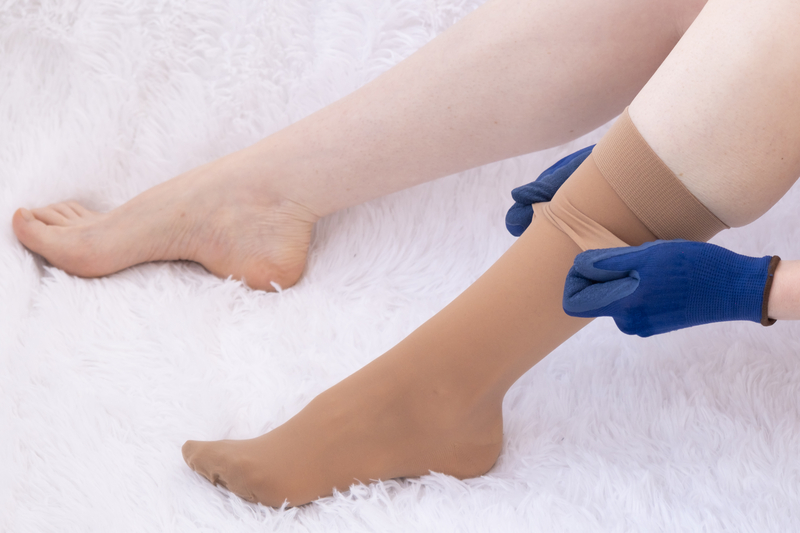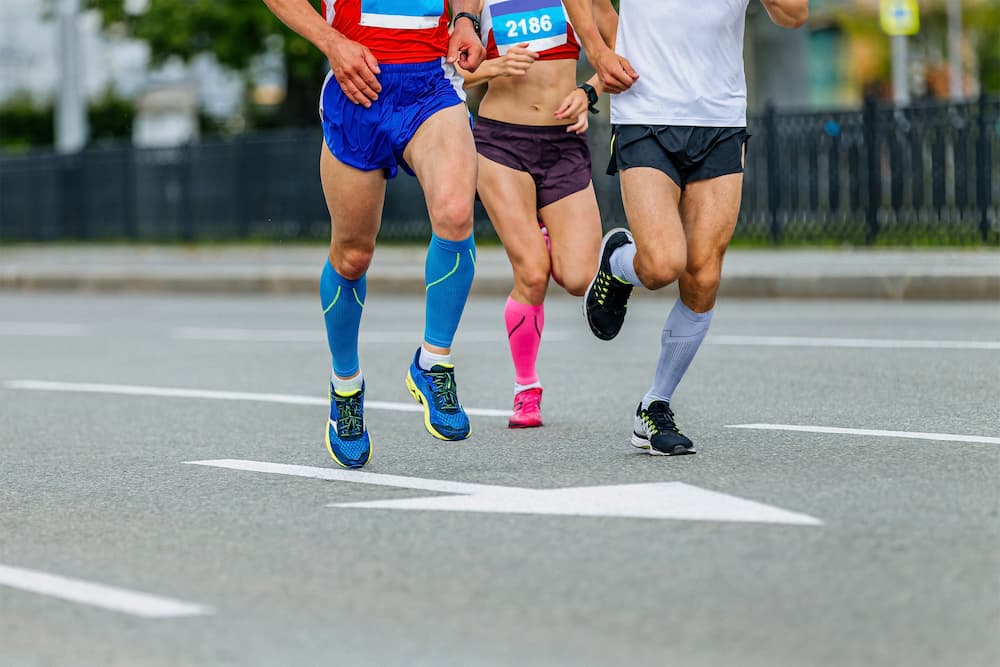Graduated Compression Socks: What Everybody Should Know
Let’s chat about something that can make a HUGE difference to your leg health and even your athletic performance: graduated compression socks. You might have heard about them, but do you really know how they work and why they’re so beneficial? Let’s break it down in plain terms.

How do compression socks work?
Think of your leg veins like tiny tubes carrying blood back to your heart. When you wear graduated compression socks, they gently squeeze those veins, helping your blood move faster and more efficiently. It’s like putting your thumb over a garden hose – the pressure increases the flow!
Now, here’s the important part: it’s graduated compression that makes the real difference. That means the pressure is strongest at your ankle and gradually decreases as it goes up your leg. This targeted pressure actively pushes blood and lymphatic fluid upwards, towards your heart. Simple compression socks just squeeze evenly, and that’s not nearly as effective.
Why Should You Wear Graduated Compression Socks?
Let’s talk about why you should seriously consider adding graduated compression socks to your daily routine. The benefits are remarkable, extending far beyond simple comfort. Think of them as “wearing a pill” – a proactive way to support your leg health and overall well-being. You’ll find they offer significant relief from common leg discomforts like itching, heaviness, fatigue, pain, swelling, night cramps, and even those pesky restless legs.
Furthermore, graduated compression plays a vital role in improving vein health. They can assist in managing skin changes associated with chronic venous disease, promote the healing of leg ulcers, and, importantly, prevent their recurrence. One of the most significant advantages is their ability to reduce the risk of deep vein thrombosis (DVT), a potentially serious condition. This is particularly crucial during long periods of travel or pregnancy. For those who have experienced a DVT in the past, these socks can also provide valuable support. When traveling, whether on long flights or drives, graduated compression socks will keep your legs feeling refreshed and minimize swelling. Pregnant women can experience significant relief from leg pain and swelling, while also reducing their DVT risk.

Now, let’s delve into the exciting area of athletic performance. Graduated compression socks can truly elevate your game. They accelerate the return of deoxygenated blood to your lungs, enhance tissue oxygenation, and reduce muscle pain and fatigue by efficiently clearing out lactic acid. Additionally, they minimize muscle vibration during running and expedite recovery after intense workouts. For optimal recovery, remember to wear them for at least two hours after exercise. In essence, high-quality, properly fitted graduated compression socks can feel like a performance-enhancing drug, giving you an edge in both your health and your physical activities.
Choosing the Right Graduated Compression Socks
Selecting the correct graduated compression socks is critical for optimal benefit, and this is where many people mess up. Proper fit is everything! Avoid the common mistake of choosing socks based solely on generic sizes. Instead, prioritize brands that offer a wide range of sizes determined by precise leg measurements. At 3Hearts Compression Socks, we place a strong emphasis on achieving a tailored fit, ensuring maximum comfort and effectiveness. Use our “Find Your Size” quiz to determine the best size based on your specific measurements.
For those with specific medical conditions, consulting your vein care physician is highly recommended. They can provide personalized advice on the most suitable compression levels for your individual needs. Even for athletic purposes, opting for brands that also manufacture medical-grade compression socks is advisable. This ensures a higher standard of quality and effectiveness, providing the support you need whether you’re managing a medical condition or pushing your physical limits.

Understanding Compression Levels
Compression is measured in mmHg (millimeters of mercury). Here’s a quick guide:
- Class I (15-20 mmHg): For mild symptoms like spider veins, varicose veins, and slight swelling.
- Class II (20-30 mmHg): For more significant varicose veins, moderate swelling, and post-procedure support.
- Class III (30-40 mmHg): For severe symptoms, ulcers, and lymphedema.
How to Use Your Graduated Compression Socks
You can wear them as much as you like! Some people even wear them overnight for night cramps or restless legs. If you experience any discomfort, pain, numbness, or tingling, take them off immediately.
At 3Hearts Compression Socks, we’re passionate about helping you experience the amazing benefits of graduated compression. We believe in quality, fit, and making a real difference in your leg health and performance.
Have questions? Feel free to reach out! We’re here to help you step into a more comfortable and healthier you.


